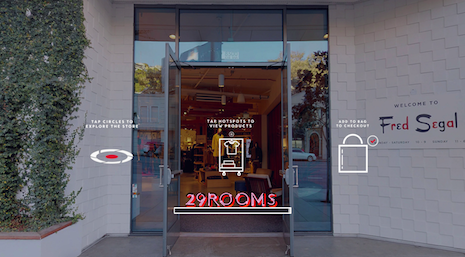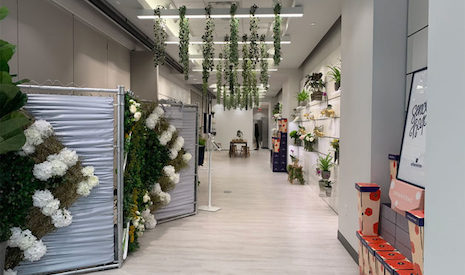 Fred Segal on Sunset Boulevard. Image credit: Fred Segal
Fred Segal on Sunset Boulevard. Image credit: Fred Segal
NEW YORK – From pop-up events to more intuitive Web sites, traditional and digital-first retailers are looking at omnichannel opportunities to reach consumers who crave connectivity.
Speaking at the National Retail Federation’s Big Show on Jan. 15, retail executives discussed strategies that can be employed to streamline customer journeys. Neglecting cohesive shopping experiences can shortchange both retailers and shoppers.
“The consumer comes in for the experience,” said John Frierson, president of Fred Segal, Los Angeles. “Yes, they buy things, but it’s not necessarily about the restriction between shopping and buying.
“For us, we really want to move people around experiences, and one of those experiences is buying,” he said. “Ideally, we’d love them to be able to buy something while they’re listening to a rapper performing at 10 o’clock at night.”
Omnichannel future
The Fred Segal president was one of several retail executives that spoke in a conversation moderated by Mark Taylor, managing director of global lead customer engagement at Capgemini Invent. Other panelists represented direct-to-consumer online brands.
With roots in traditional bricks-and-mortar, Fred Segal has looked for opportunities to merge the physical and digital.
Screenshot of Fred Segal's digital experience for 29 Rooms
In December, the U.S. retailer helped launch an experiential pop-up in partnership with Refinery29, Mastercard and Next Retail Concepts.
At the media brand’s 29Rooms installation in Los Angeles, Fred Segal showcased an edit of gifts only available online. The three-dimensional environment included digital content provided by the retailer (see story).
Mr. Frierson also noted that digital-first brands are also launching pop-ups and creating live experiences. These events help introduce consumers to a brand’s story and reduce tensions between in-store and online shopping.
Another overlooked attribute of physical stores is the possibility to attract customers at a lower cost, whether or not a purchase is made. The chance also exists for digital brands to better differentiate themselves through physical spaces than they can online.
“The future is omnichannel,” said Ajay Kori, cofounder of Urban Stems, Washington, D.C. “Every single digital brand is going to have stores.”
Inability to limit friction between ecommerce and traditional retail can also result in missed opportunities and other costs, according to Scott Tannen, CEO of Boll and Branch, New York.
Urban Stems has hosted its own pop up shops. Image credit: Tysons Corner
For instance, Fred Segal did not launch its first ecommerce Web site until 2015 (see story).
“We’re trying to push our actual experience into the digital experience,” Mr. Frierson said. “It’s been challenging to make it feel like it’s not technology, it’s the actual experience.
“We really wanted to think about what our own unique proposition was and then convert that into our digital experience,” he said. “We didn’t really look at the technology [details] and we were most concerned in recreating digitally what we are.”
In-store tech
Traditional stores remain vital in the retail ecosystem because they serve as marketing platforms. Successfully incorporating technology into physical locations benefits retailers and shoppers alike.
According to a report from Coresight Research, cities are expected to see a flourish of new flagship renovations this upcoming year. Retailer supply chains will also become more flexible, with less of a rigid linear process, and an influx of start-ups will continue pushing product development.
The researcher believes the coming year will be a time for reinvention, with many embedding artificial intelligence into the core of retail and its functions.
If done correctly, a global retail sector will arise, stronger and better equipped to solve customers' needs (see story).
Many retailers that predate the rise of ecommerce are still struggling with siloed operations. Rather than looking at buying and merchandising as a cross-channel effort, teams are often split between bricks-and-mortar and online.
Less than half of retailers say they have integrated their organizational or merchandising planning across channels, and 39 percent say their planning systems are cross-channel, according to a report from Boston Retailer Partners. Most of the retailers who have undergone these efforts admit that they need improvement (see story).
“When you think about frictionless and thinking about all the technology in this building, there’s a fine line between innovative and stupid,” Urban Stem’s Mr. Kori said. “So if we think about our customer, how are we going to make this better for our customer?”


